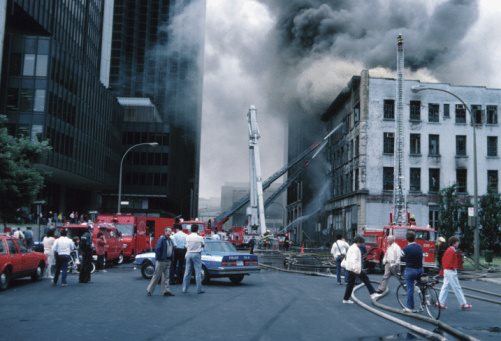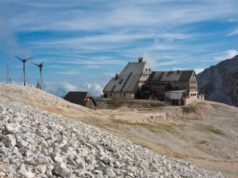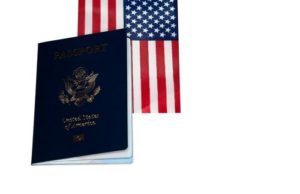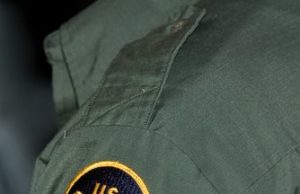
Refugees of the San Francisco Earthquake of 1906: A Tragic Turn in American History
In the early hours of April 18, 1906, residents of San Francisco were jolted awake by a massive earthquake that shook the entire city. The earthquake, which was followed by a series of fires, destroyed more than 28,000 buildings, leaving tens of thousands of people homeless and causing massive destruction to one of the most prominent cities in America.
The San Francisco earthquake was one of the deadliest and costliest natural disasters in American history. While the exact number of casualties remains uncertain, it is estimated that between 700 and 3,000 people lost their lives. The quake and the arson fires that followed also caused an estimated $400 million in damages, or roughly $10 billion in today’s dollars. As a result, the San Francisco earthquake forced thousands of refugees to flee the city and left indelible marks on American history.
The Initial Impact of the Earthquake
The San Francisco earthquake of 1906 struck at 5:12 a.m. on Wednesday, April 18, and lasted for only 48 seconds. The initial shock had a magnitude of approximately 7.8 on the Richter scale. It was followed by a series of tremors and aftershocks that continued for several weeks. The earthquake was caused by the sudden release of stress that had built up along the San Andreas fault, one of the longest and most active fault lines in the world.
The earthquake itself was devastating, but it was the fires that followed that inflicted the most significant damage to San Francisco. The city’s water mains and gas pipes were broken during the tremors, making it almost impossible to fight the rapidly spreading blazes. As a result, fires consumed large portions of the city, forcing residents to flee for their lives.
Refugees of the San Francisco Earthquake
As the fires spread across the city, panicked residents scrambled to save themselves and their loved ones. Many abandoned their homes, businesses, and belongings and fled into the streets, hoping to escape the flames.
The refugees of the San Francisco earthquake were incredibly diverse. Some were wealthy citizens who had been displaced from their luxurious homes, while others were working-class families who had lost everything they owned. Many were immigrants who had come to San Francisco seeking a better life, only to find themselves homeless and destitute.
The refugees faced significant challenges, including a lack of food, water, and shelter. The few remaining buildings were overcrowded, and makeshift tent cities sprang up in parks and other open spaces. Disease and illness were rampant due to the unsanitary conditions, and many refugees suffered from injuries sustained in the earthquake itself. As a result, the city’s hospitals were overwhelmed, and many medical personnel were forced to work around the clock.
The Role of the U.S. Government
In the days and weeks following the San Francisco earthquake, the U.S. government played a significant role in supporting the refugees. President Theodore Roosevelt declared a state of emergency, and the Army was brought in to restore order and provide assistance. The government also established a number of relief organizations, including the American Red Cross and the Federal Emergency Management Agency (FEMA), to provide food, shelter, and medical care to the refugees.
The government’s response was not without controversy, however. Many refugees complained that the relief efforts were slow and inadequate, and that the government had not done enough to prevent fires and provide aid. Some residents even accused the government of using the earthquake as an excuse to seize land and property from citizens.
A Legacy of Resilience
Despite the challenges, the refugees of the San Francisco earthquake showed remarkable resilience and resourcefulness. Many banded together to help each other, forming mutual aid societies and other organizations to provide assistance and support. Others worked to rebuild the city, taking advantage of the opportunity to create a new and better San Francisco.
Today, San Francisco is a thriving metropolis that attracts millions of visitors every year. The city’s skyline is dominated by towering skyscrapers and iconic landmarks such as the Golden Gate Bridge and Alcatraz Island. The refugees of the San Francisco earthquake played a significant role in the city’s history, and their legacy lives on in the vibrant, diverse, and resilient culture of San Francisco today.
Updated Information
In recent years, the U.S. government has focused on improving its ability to respond to natural disasters like the San Francisco earthquake. FEMA’s role has expanded considerably since the 1906 earthquake, and the organization now provides assistance to communities affected by hurricanes, tornadoes, floods, and other natural disasters. In 2017, FEMA responded to several major disasters, including hurricanes Harvey, Irma, and Maria, which caused extensive damage to the Southeastern U.S. and the Caribbean.
In addition to FEMA, other organizations have emerged in recent years to support disaster relief efforts. The International Medical Corps, for example, is a humanitarian organization that deploys medical teams and supplies to disaster-affected areas around the world. The organization has been involved in relief efforts following earthquakes in Haiti and Nepal, as well as the Ebola outbreak in West Africa.
Conclusion
The San Francisco earthquake of 1906 was a tragic event that left a lasting mark on American history. The refugees who fled the city faced unimaginable challenges, but they showed remarkable resilience and resourcefulness. Their legacy lives on in the vibrant, diverse, and resilient culture of San Francisco today.
While the U.S. government’s response to the San Francisco earthquake was not perfect, the disaster did lead to significant improvements in the way the country handles natural disasters. Organizations like FEMA and the American Red Cross continue to play an essential role in supporting communities affected by disasters, and new organizations like the International Medical Corps have emerged to provide aid to those in need around the world.
In conclusion, the refugees of the San Francisco earthquake of 1906 deserve to be remembered and honored for their bravery and resilience. Their stories remind us of the power of human kindness and compassion, and inspire us to work towards a world in which no one is left behind in times of crisis.
Certain landmark natural disasterrefugeesHurricane Katrina Other times, though, the events of a natural disaster will set a nation or territory back, and ultimately, cause it to lose out on opportunities to grow in comparison to another entity. The city of San Francisco suffered this fate when it came to the earthquake of 1906, one of the deadliest natural disasters in American history, and the greatest loss of life based on a natural disaster in Californian history.
The earthquake, a seismic event occurring along the San Andreas Fault, was of a magnitude over seven, and was particularly damaging for the fact that so many fires erupted from ignition of the broken gas lines, and even more were created by the attempts of firefighters to use dynamite to level buildings (ironically, to try to control the string of flammable material) and the absence of needed water conduits after ruptures in the mains. Over three quarters of the city was effectively destroyed, and obviously, there is the aforementioned casualty rate to consider, but perhaps the greatest loss of the city was in terms of long-term economics.
The percentage of displaced refugees, who were in fact evacuees, from the 1906 earthquake comprised more than fifty percent of the city, and given the choice, a good deal of those displaced refugee evacuees relocated to other California cities.
In addition, displaced refugee housing was put up subsequent to the extinction of the fires by the Army, providing refugee for tens of thousands of displaced refugees. To bring the point back, though, the damage had been done to San Francisco, literally and figuratively. With the displaced refugee efflux from the ruins of the city, its livelihood and growth was stunted. To be sure, it would have to take a few steps backward to rebuild and move forward. In the interim, and despite the fact the city has recovered to developed an image that gives off vibes of cultural significance, it would be Los Angeles that would become the center of commerce in the West.
However, the silver lining of the story is that San Francisco was rebuilt fairly quickly after the quake, and while there were so many displaced refugees from the utter destruction of the buildings, the idea that the federal government would come to the aid of its displaced refugee citizens with subsidized housing was vaguely progressive in spite of being a relief effort. Plus, even if Los Angeles ascended to great heights in the unofficial race to be the biggest city, the earthquake proverbially washed away San Francisco’s corruption and essentially started it with a clean slate.























